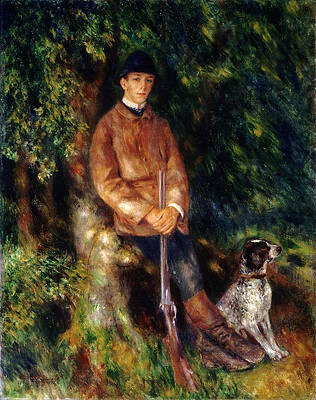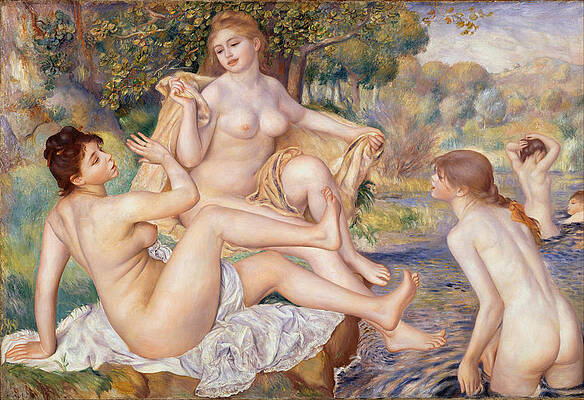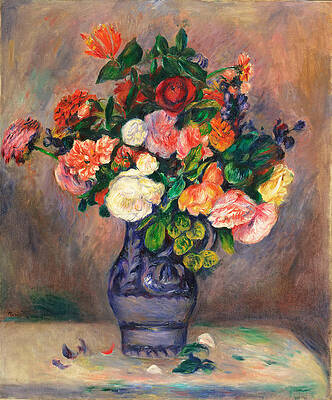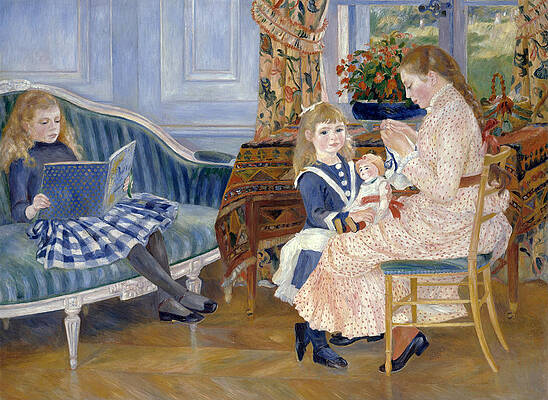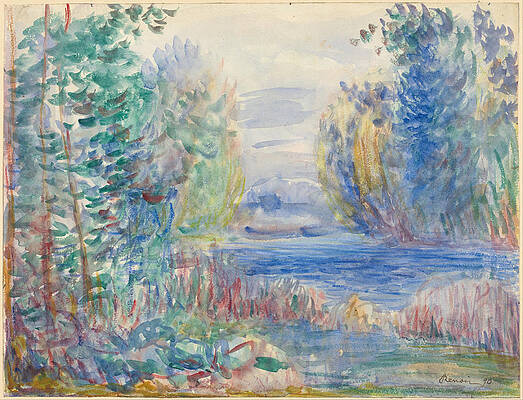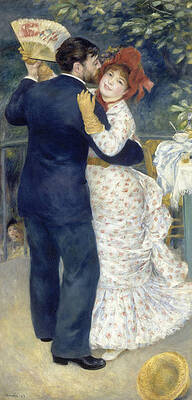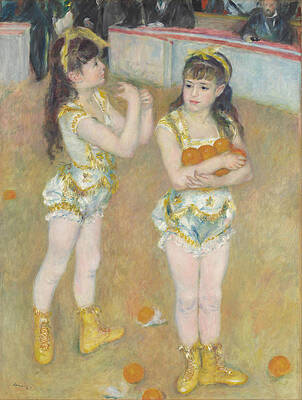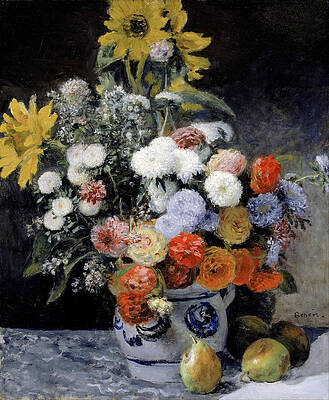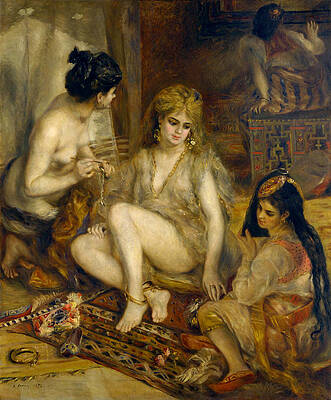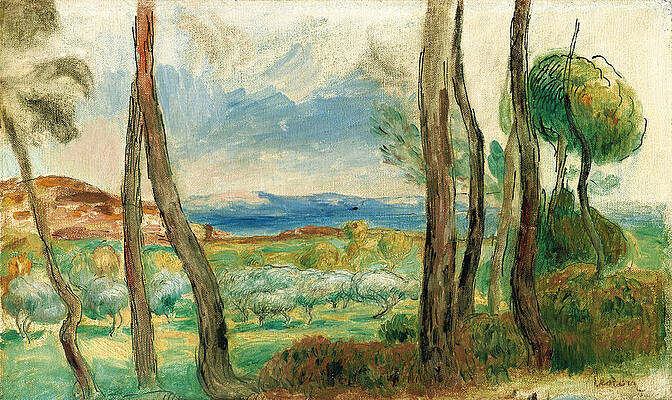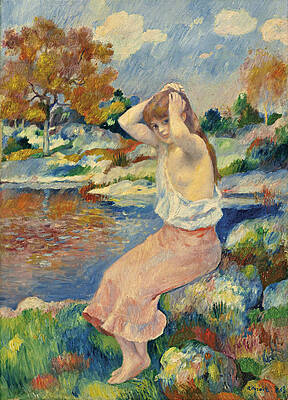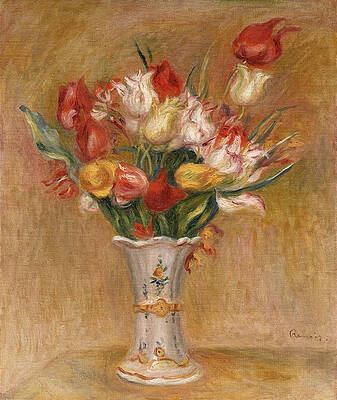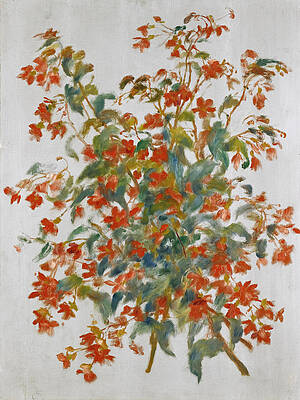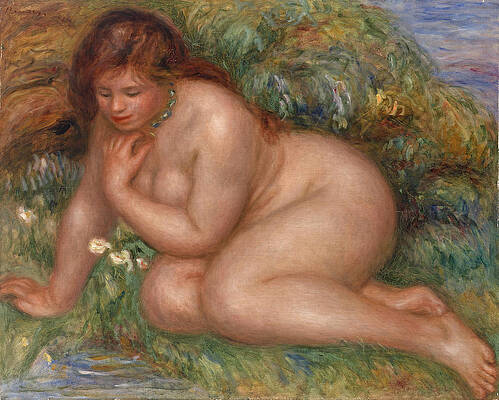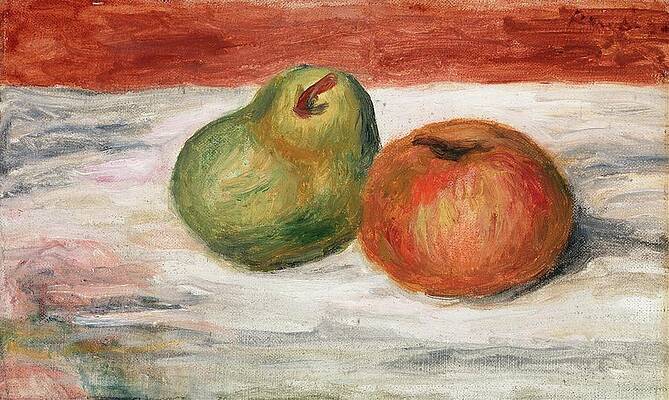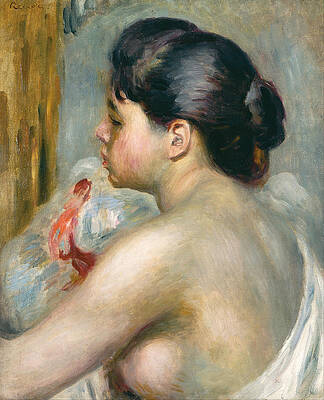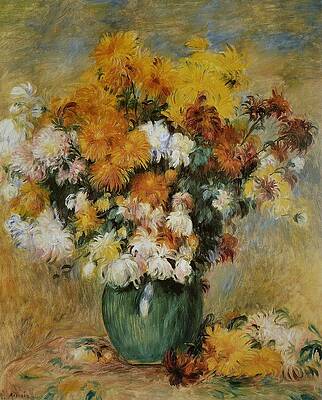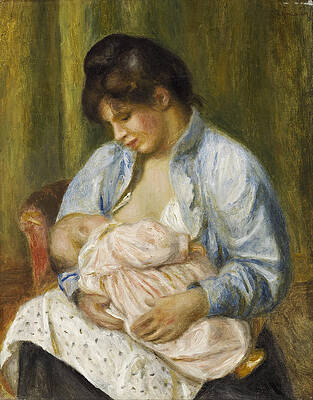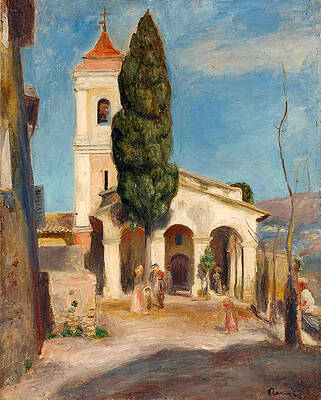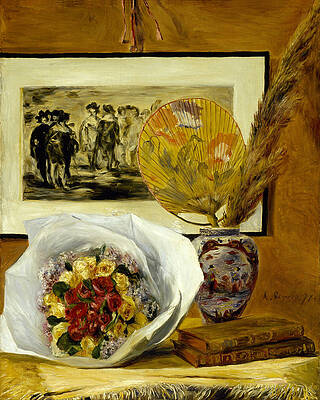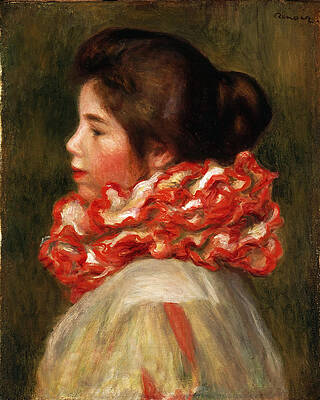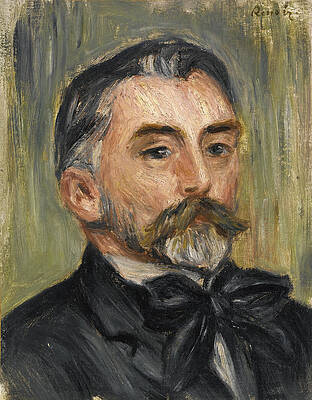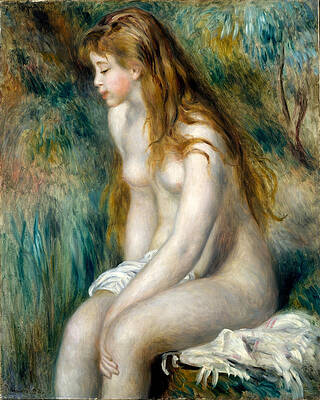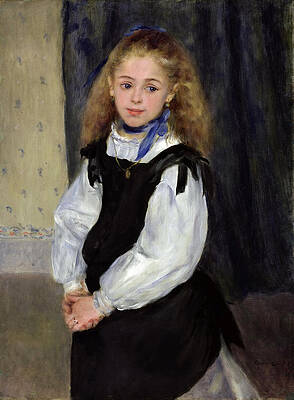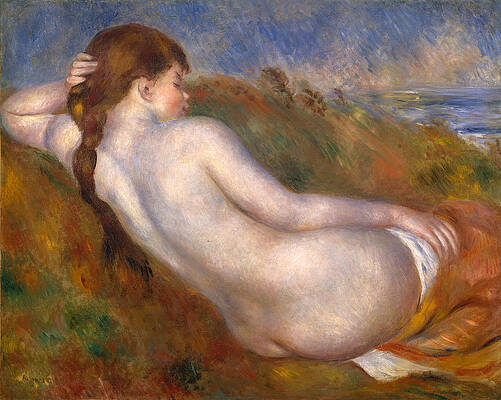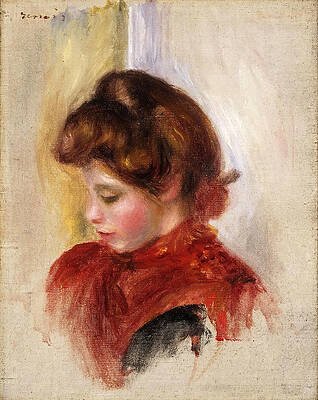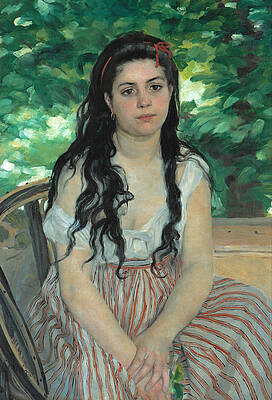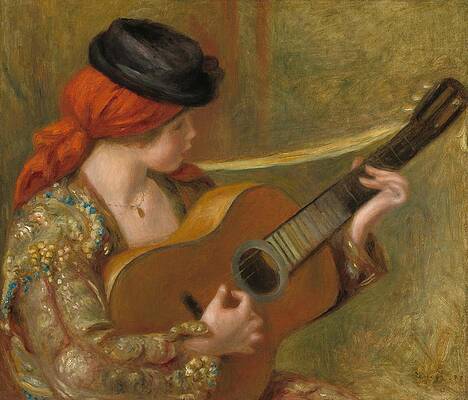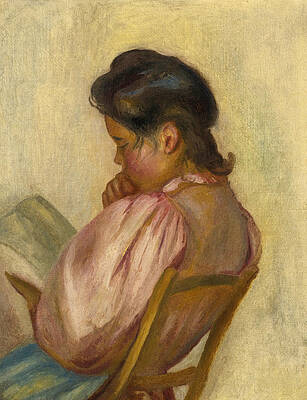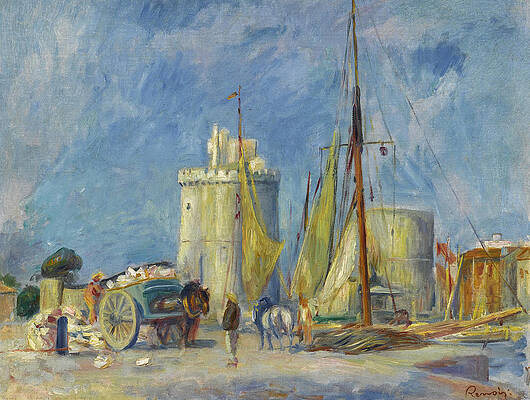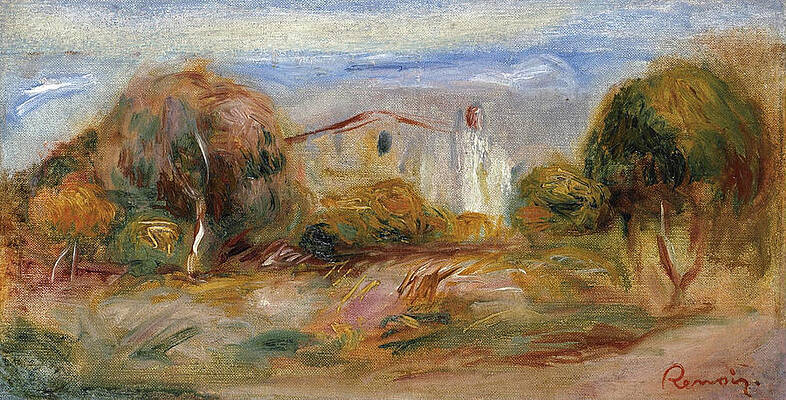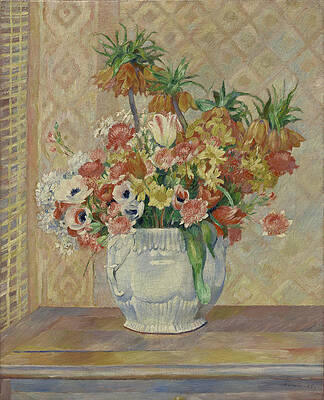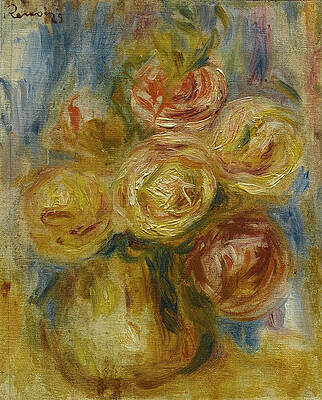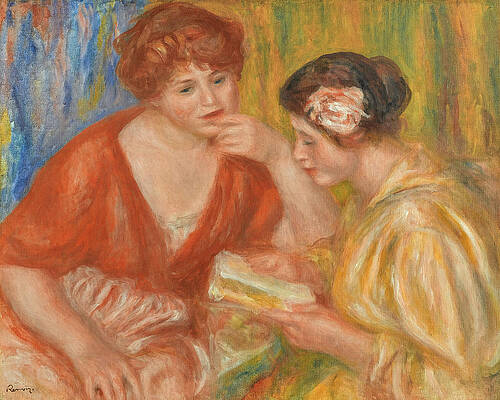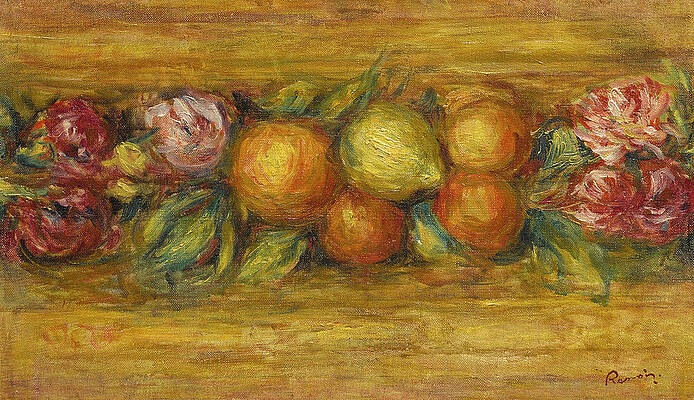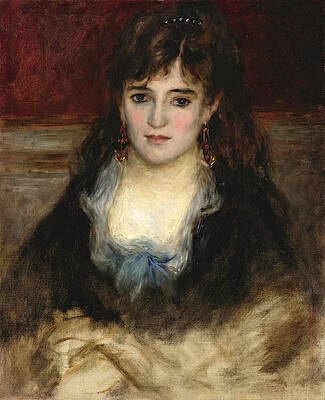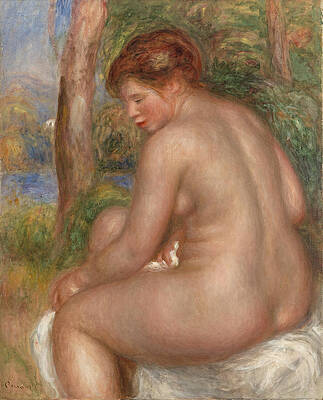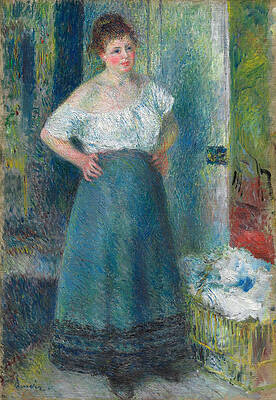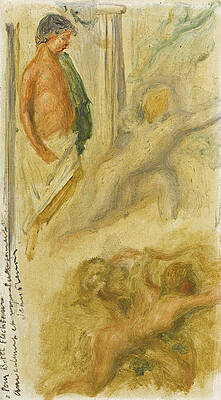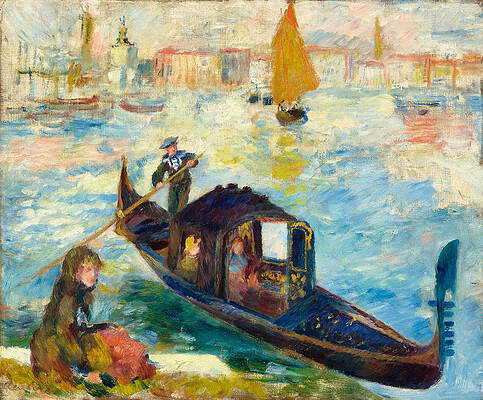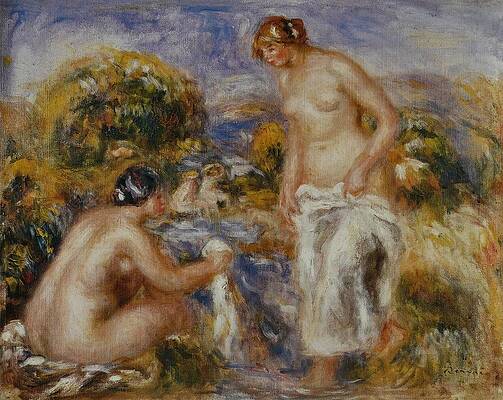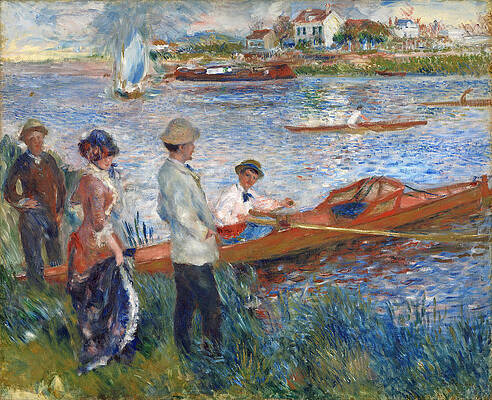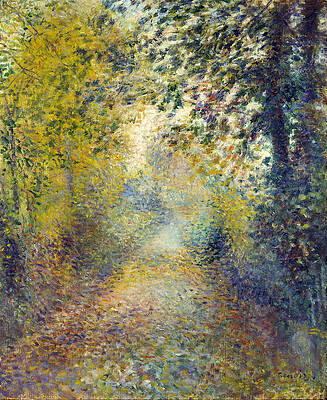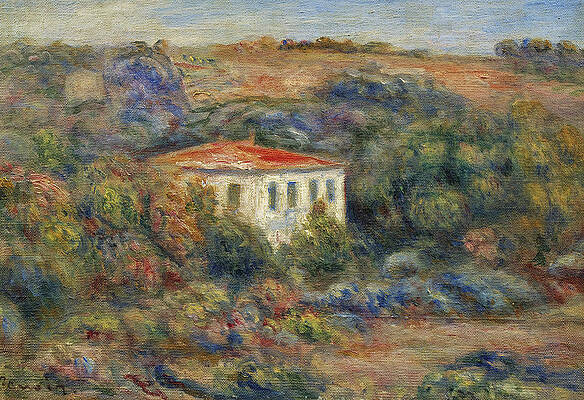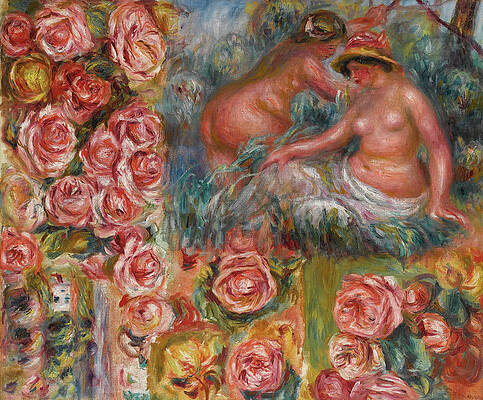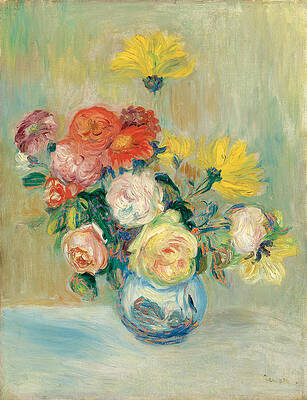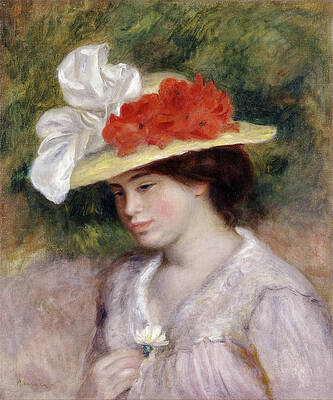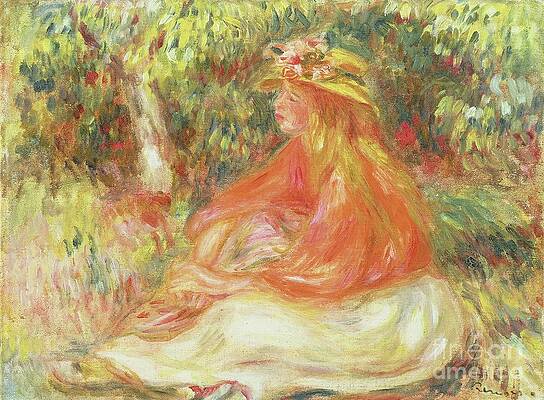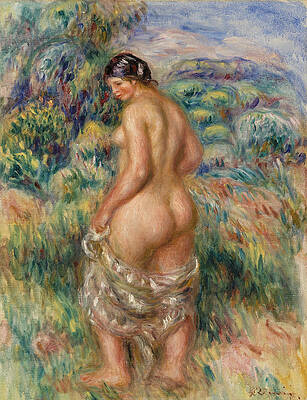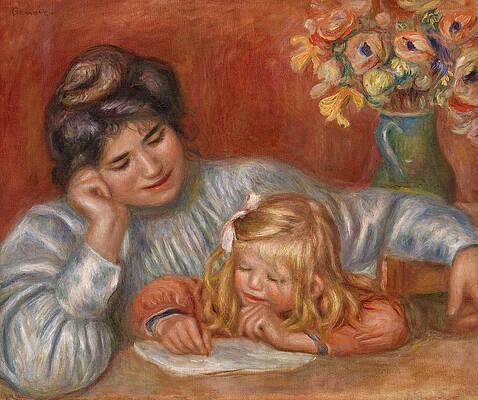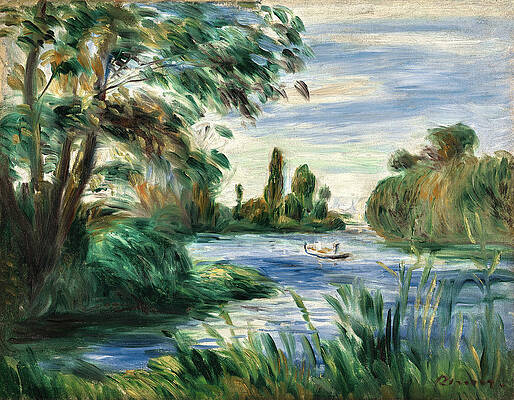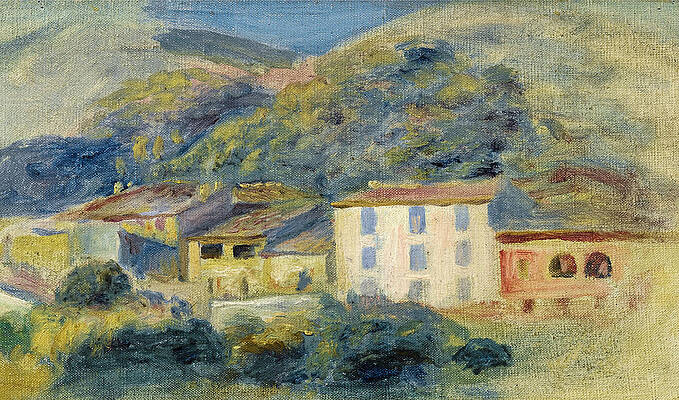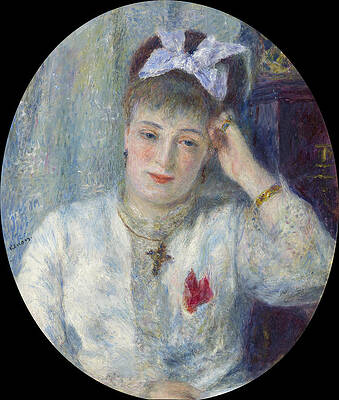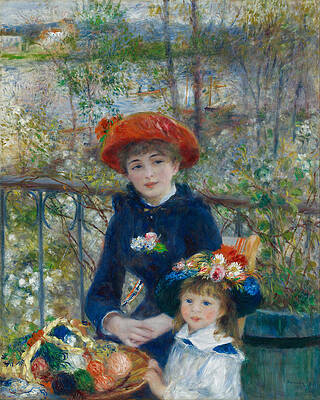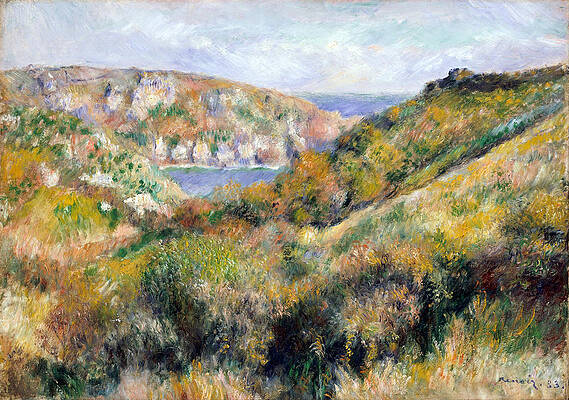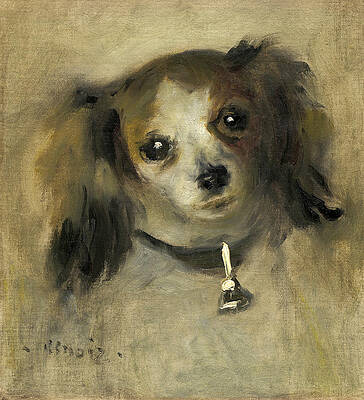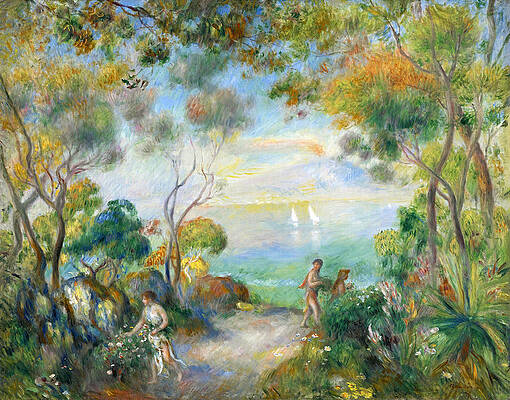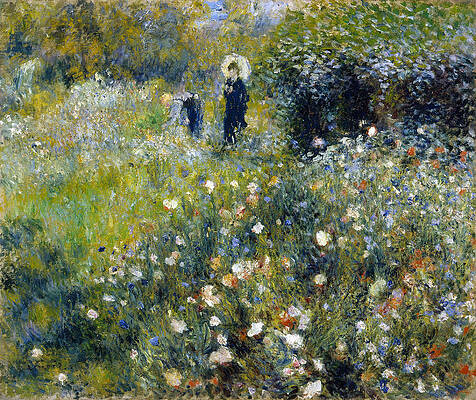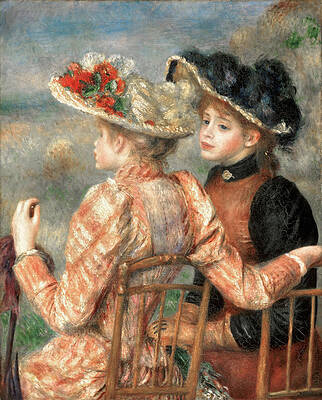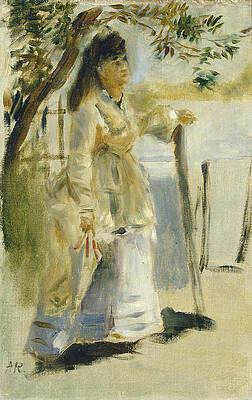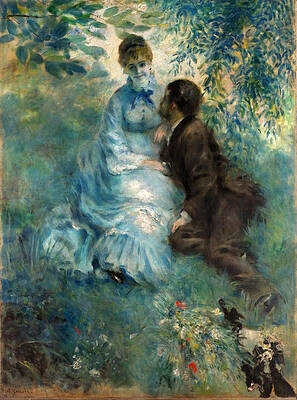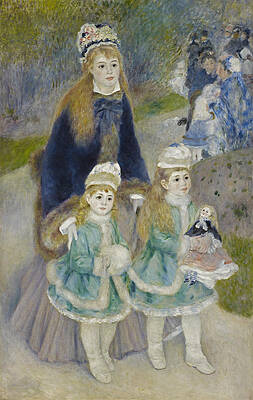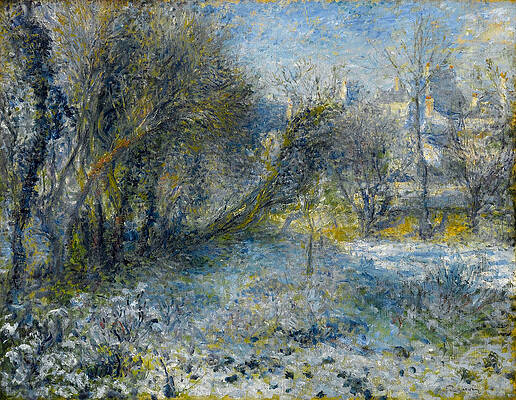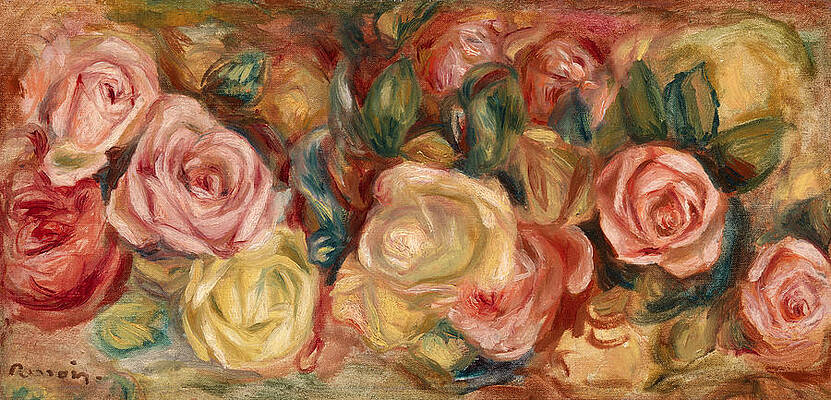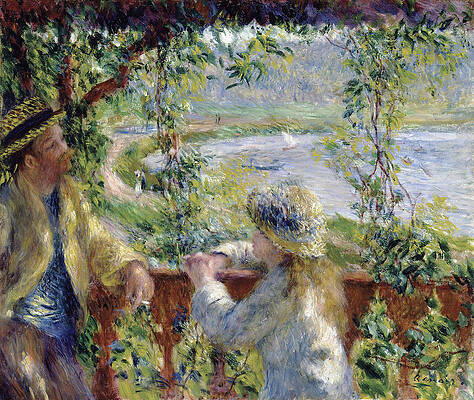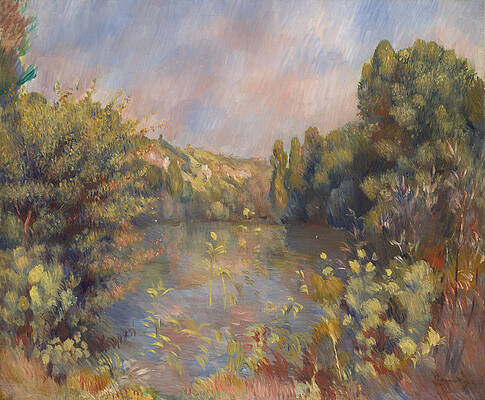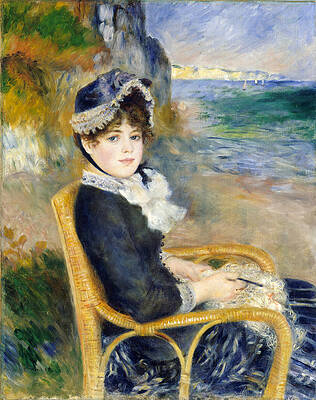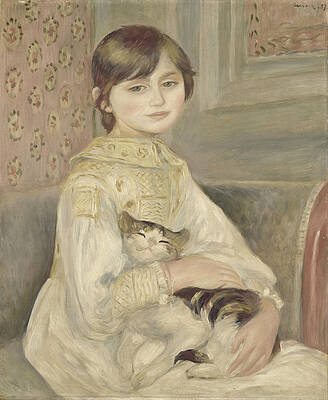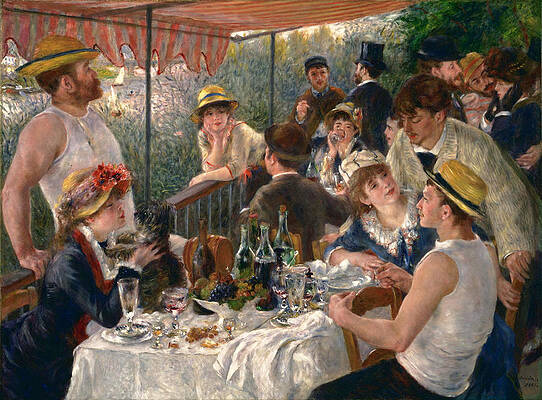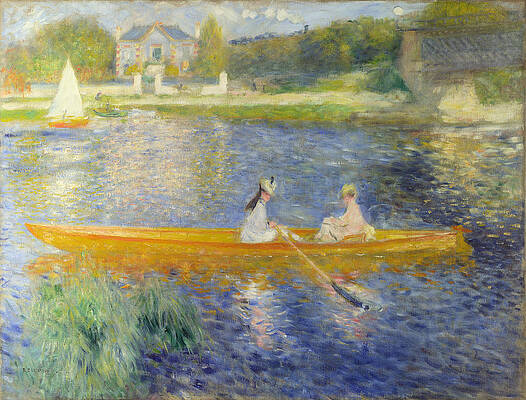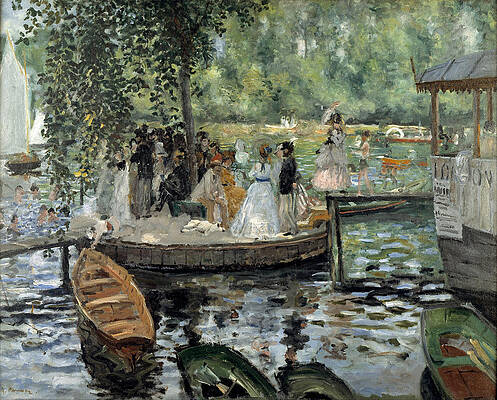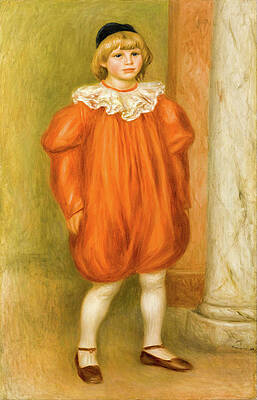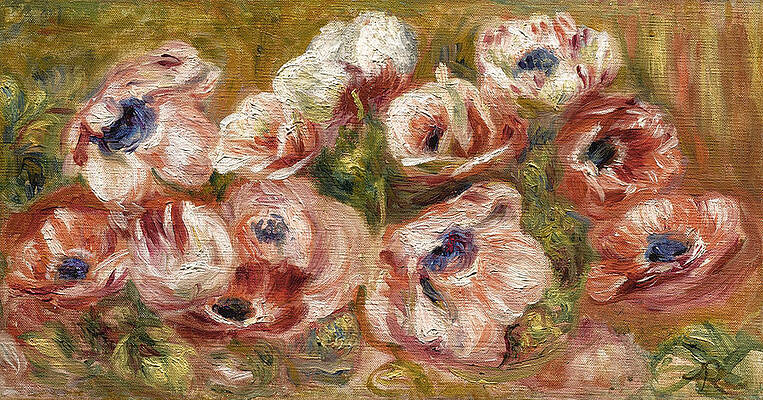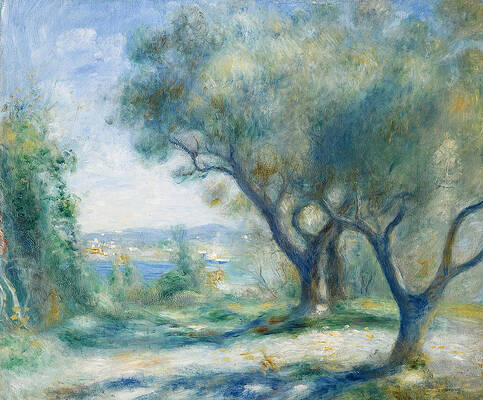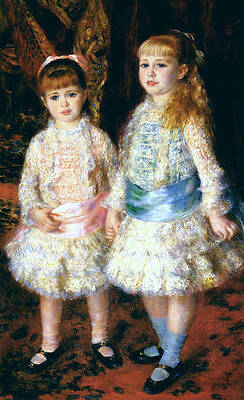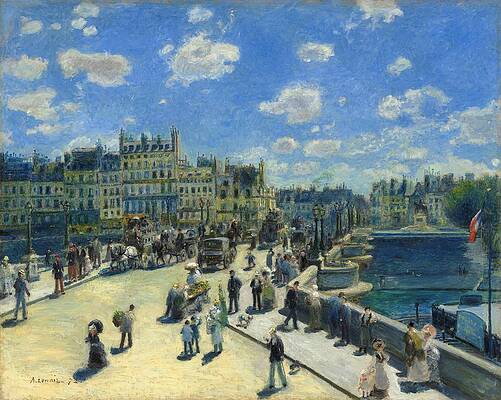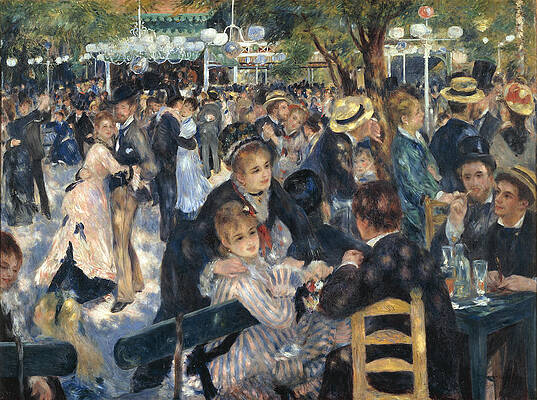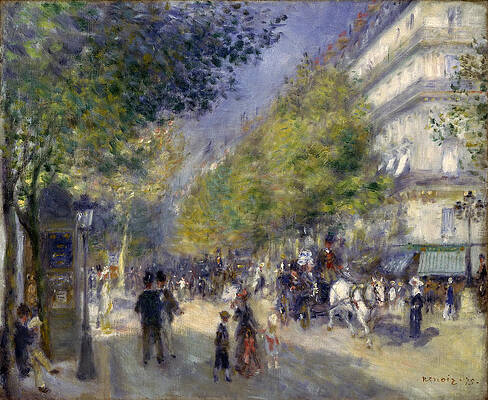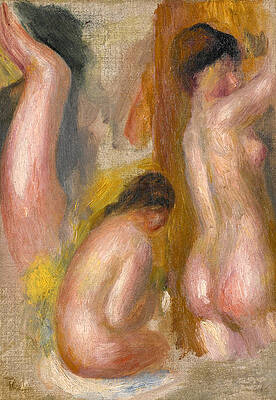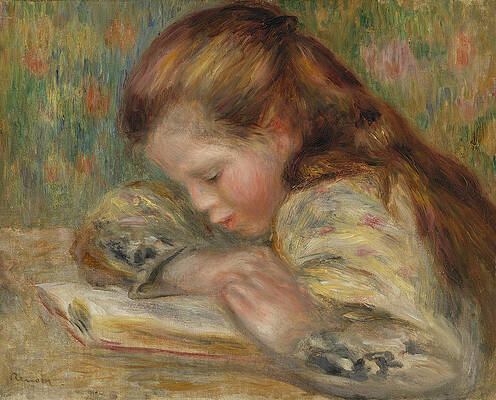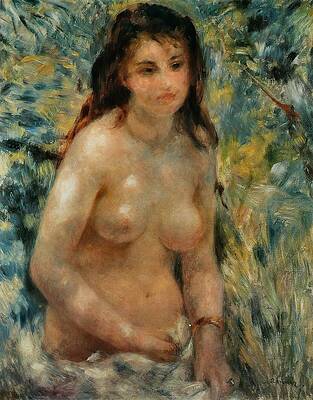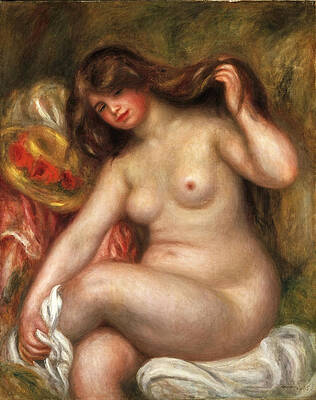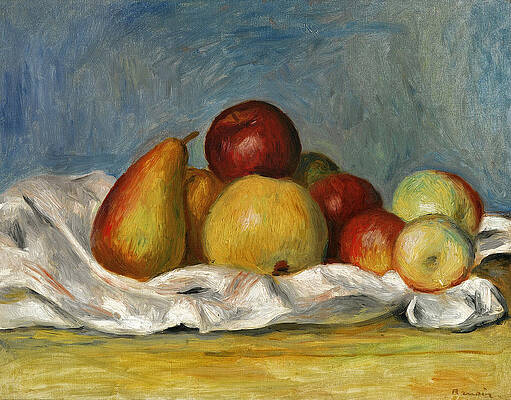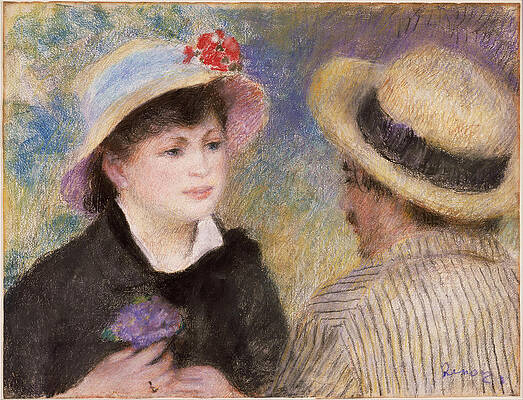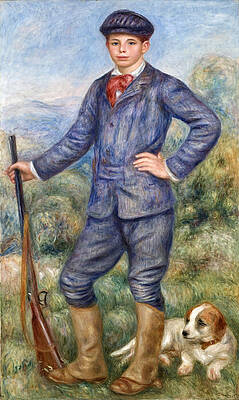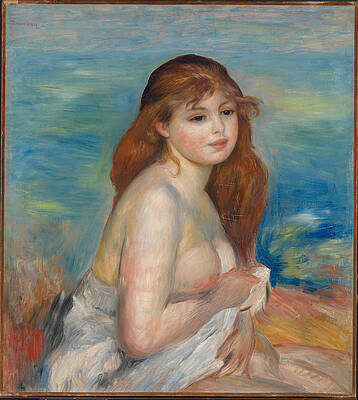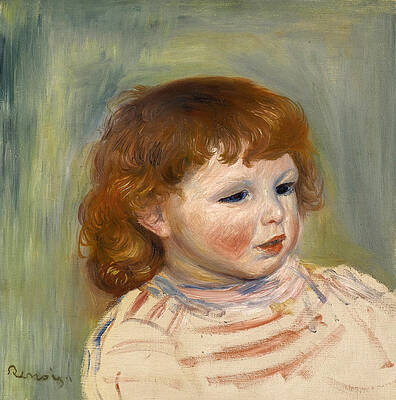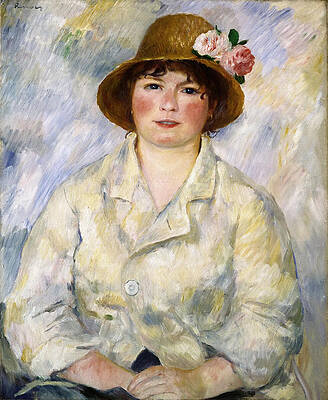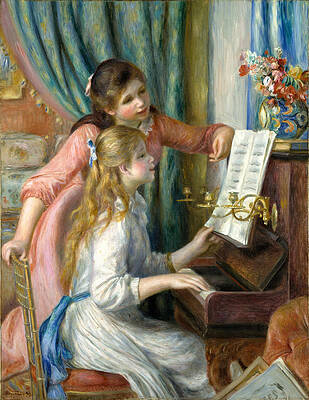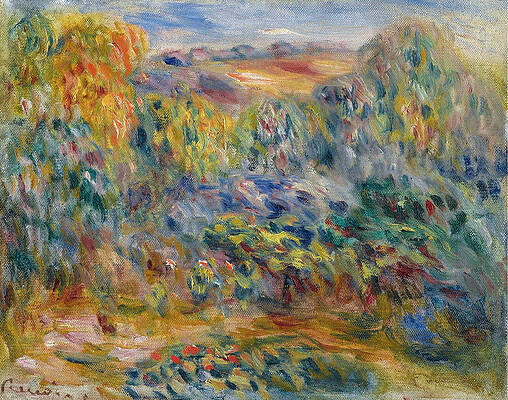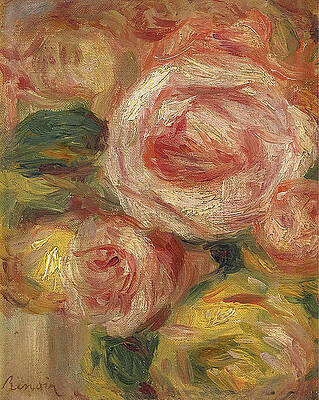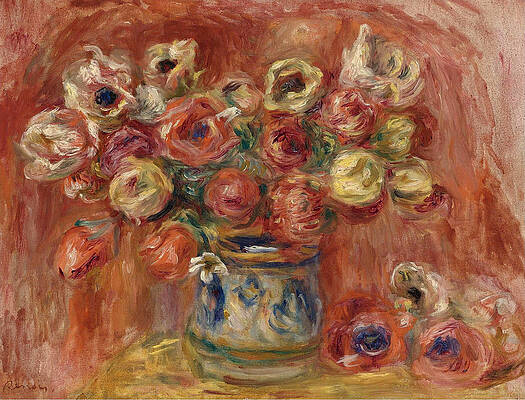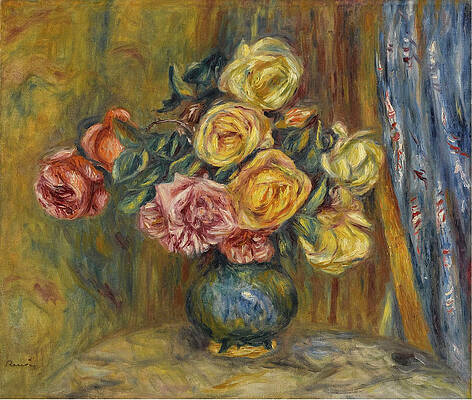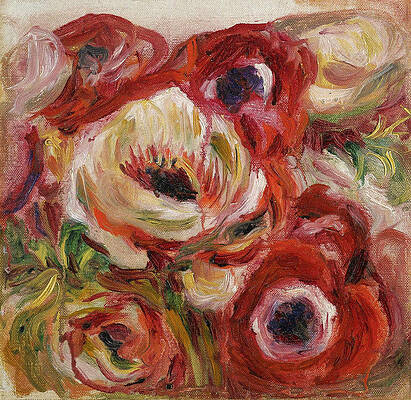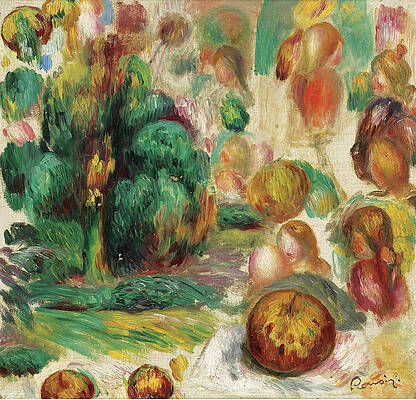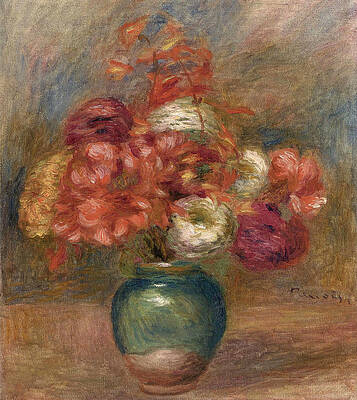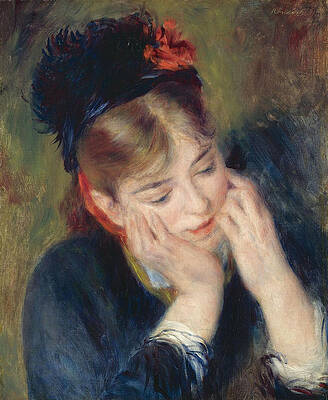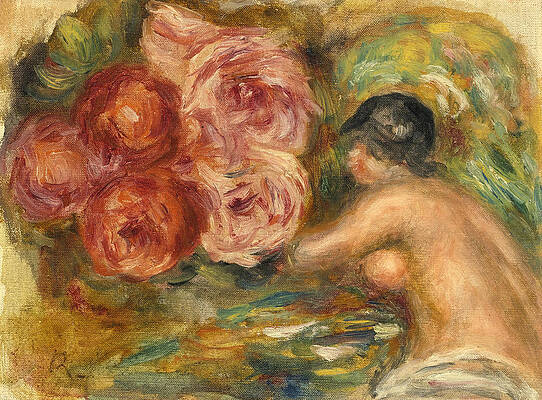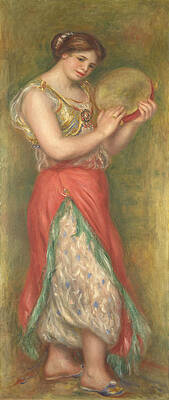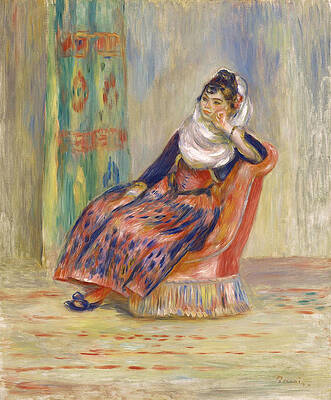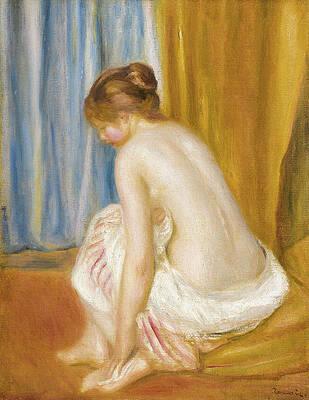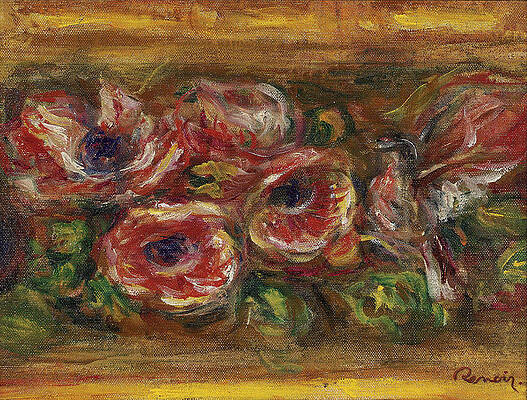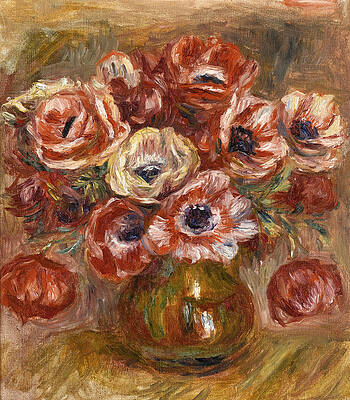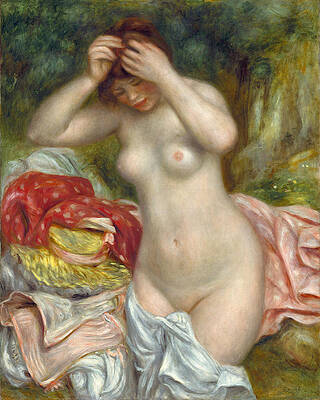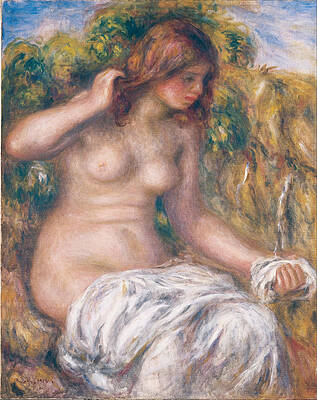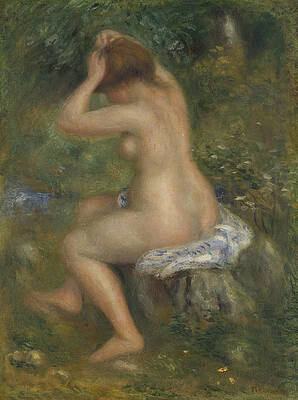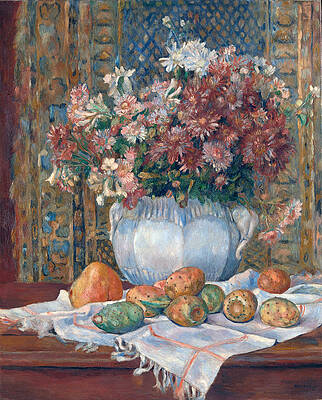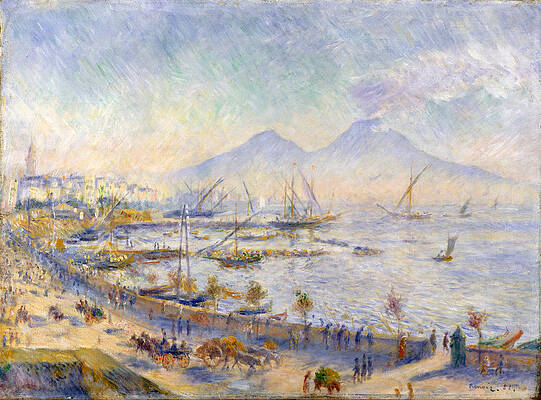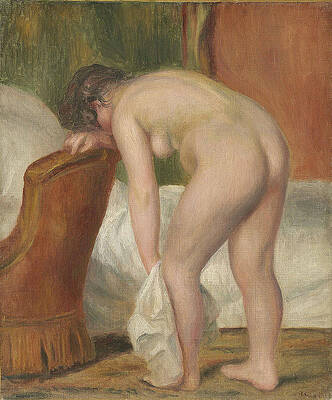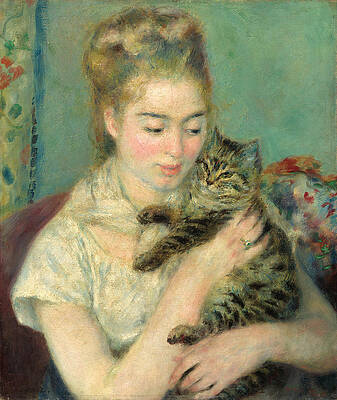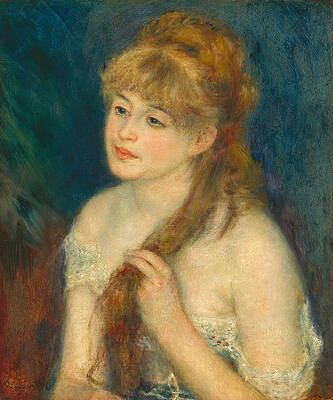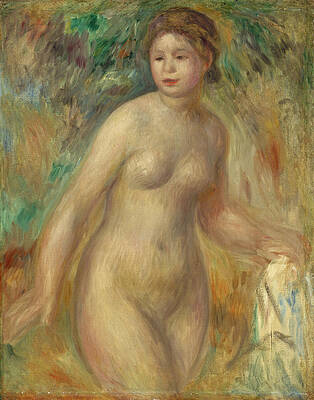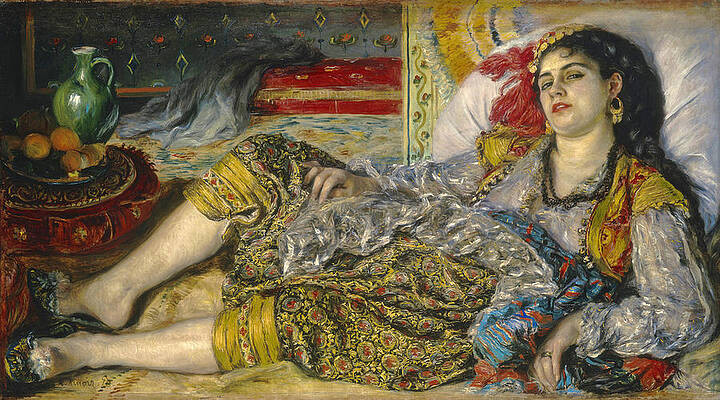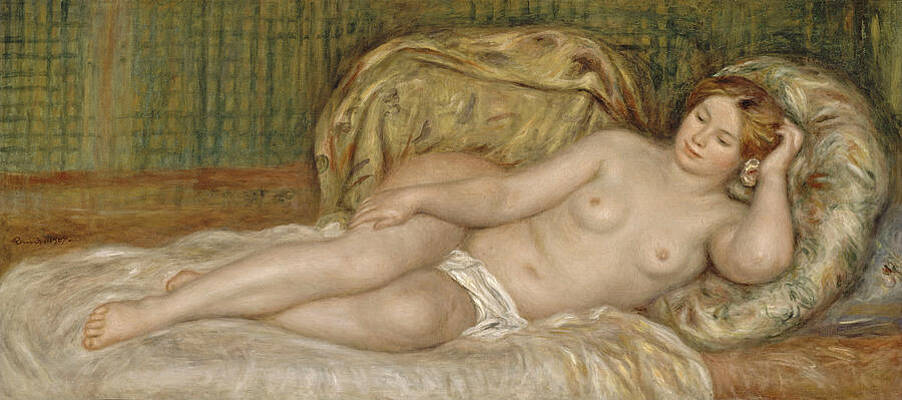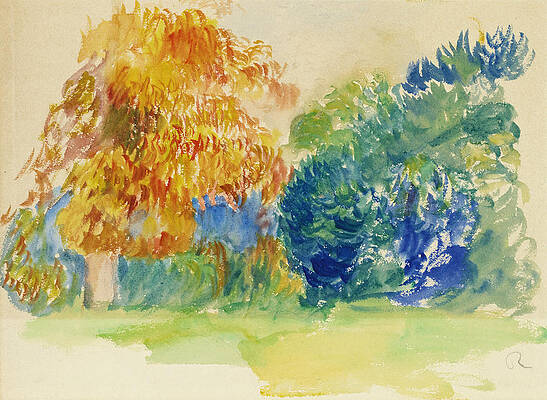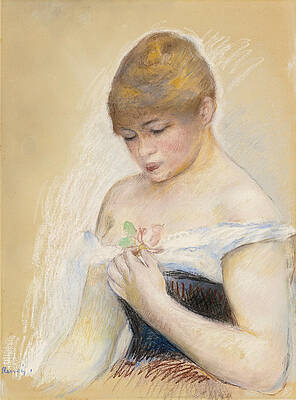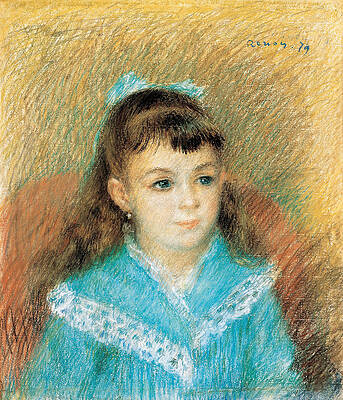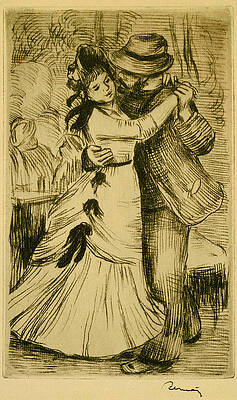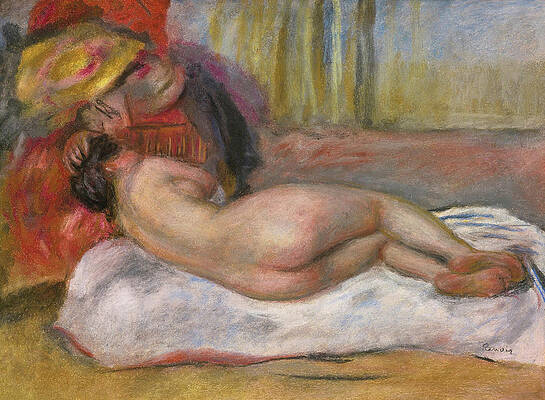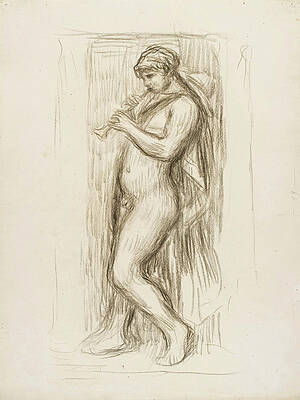Pierre-Auguste Renoir
Paintings
Portrait of Alfred Berard with His Dog
The Great Bathers
Diana as huntress
Flowers in a Vase
Children's Afternoon at Wargemont
The Swing
La Promenade
Children on the Seashore Guernsey
River Landscape 1890
Country Dance
Acrobats at the Cirque Fernando.Francisca and Angelina Wartenberg.
Mixed Flowers in an Earthenware Pot
Parisiennes in Algerian Costume or Harem
Bather
Mediterranean landscape
Nude Woman in an Interior
La toilette
Tulips
Still life with Fuchsias
Etude de Nu. Apres le Bain
Bather Drying Herself
Three Bathers with Crab
Bather Gazing at Herself in the Water
Apple and Pear
Dark-Haired Woman
Girl near a Fountain
Vase of Flowers
Nude
Girl Tatting
Bouquet de Chrysanthemes
A Woman Nursing a Child
La Chapelle Notre-Dame de Protection au Haut-de-Cagnes
Bouquet in a Vase
Still Life with Bouquet
Girl in a Red Ruff
The Coffee Pot
Portrait of Stephane Mallarme
Figures on the Beach
Young Girl Bathing
A Young Girl with Daisies
Still Life with Flowers and Fruit
Peaches
Portrait of Mademoiselle Legrand
Reclining Nude
Bather
Girl in a Red Scarf
Bouquet of Chrysanthemums
After the Luncheon
Summer
Mademoiselle Henriot or Young Girl with a blue Ribbon
Young Spanish Woman with a Guitar
Dance at Bougival
Woman Reading
La Rochelle
Landscape with House
Landscape in Cagnes
Claude Monet, Le Liseur
Seated Bather
Still Life. Flowers
Roses
La lecture. Deux femmes aux corsages rouge et rose
Panel of Fruits and Flowers
Portrait of Nini
Houses on a Hill
Oedipus Rex
Bather in Three-Quarter View
The Duck Pond
The Laundress
Sketch Of Greek Subjects
The Grand Canal. Venice. Gondola
Femmes au bain
Oarsmen at Chatou
Jeanne Samary
In the Woods
House in a Landscape
Double Portrait of Jeanne Baudot
Girl with basket. Gabrielle in the garden
Portrait of Mme. Paulin
Femme au corsage rouge
Etude de Nus et de Fleurs
Femme en Chemise Blanc
Vase of Roses and Dahlias
Two Girls Reading
Bouquet of Roses
Embroiderers
View of a Park
Woman in a Flowered Hat
Girl Seated in a Landscape
Girls with Hats
Standing Bather
Le Chalet de Blanche Pierson a Pourville
Writing Lesson
Au Bord de la Riviere. La Seine
Landscape with Houses. Cagnes
Marie Murer
Port de Marseille. Le Fort Saint-Jean
Two Sisters.On the Terrace
The Bathers
Hills around the Bay of Moulin Huet Guernsey
The Wave
Woman in a Park
Head of a Dog
The Guitar Player
A Garden in Sorrento
Country Dance
Woman with a Parasol in a Garden
Algerian Girl
The Mosque
The Apple Seller
Field of Banana Trees
Young Girls
Two Girls
Young Girls at the Piano
Woman by a Fence
Lovers
Mother and Children. La Promenade
Rocky Crags at L Estaque
Snow covered Landscape
Roses
Portrait of Colonel Howard Jenks
The Umbrellas
Girl Reading
Near the Lake or By the Water
Lakeside Landscape
Cup of Tea Spoon and Lemon
By the Seashore
Child with cat. Julie Manet
Luncheon of the Boating Party
The Skiff. La Yole
La Grenouillere
Claude Renoir in Clown Costume
Anemones
Vue de Mourillon
The Farm at Les Collettes. Cagnes
Pink and Blue. The Cahen d'Anvers Girls
Pont Neuf Paris
Bal du moulin de la Galette
The Grands Boulevards
Children's Afternoon at Wargemont
Boy with a Toy Soldier. Portrait of Jean de La Pommeraye
Road at Wargemont
Three Bathers. Fragment
Woman with a Hat
Child Reading
Torse effet de soleil
Large Bather
Pears and apples
Boating Couple. said to be Aline Charigot and Renoir
Portrait of Jean Renoir
Jean Renoir as a Hunter
After the bath
Portrait of Pierre Renoir
Portrait of Madame Renoir
Gabrielle and Jean
Two Young Girls at the Piano
Landscape at Montagne
Bather
Seaside
Roses
Bouquet of Flowers
Study Of A Nude
Roses with Blue Curtain
Anemones
Heads Trees and Fruits
Big Tree near the Road
Bouquet of Flowers in Green Vase
Esquisse de Paysage du Midi
Reflexion
Head of a Woman. Gabrielle
Roses and Study of Gabrielle
Dancing Girl with Tambourine
Gladioli in a Vase
Algerian Woman
Bather
Bathers
Two Apples
Dancing Girl with Castanets
Anemones
At the Garden in Bretagne
Anemones in a Vase
Lovers
Bather Arranging her Hair
The Daughters of Catulle Mendes. Huguette Claudine and Helyonne
Woman by Spring
Still Life with Flowers and Prickly Pears
The Bay of Naples
Femme nue debout, s'essuyant la jambe
Young woman arranging her shirt. Female Nude, Louise Bengel
Woman with a Cat
Young Woman Braiding Her Hair
Nude
Odalisque
Large Nude

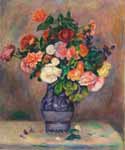

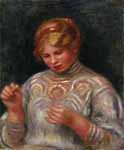

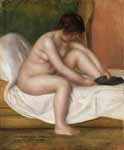
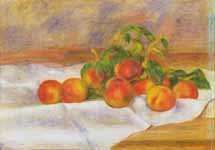
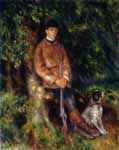
Portrait of Alfred Berard with His Dog
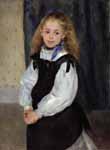
Portrait of Mademoiselle Legrand

Still Life with Flowers and Fruit
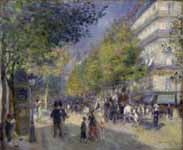
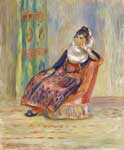

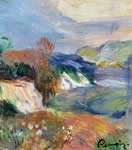
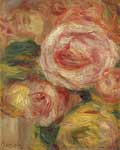
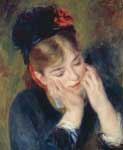

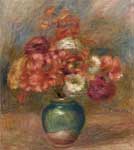
Bouquet of Flowers in Green Vase
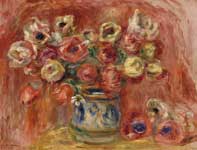
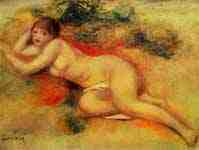
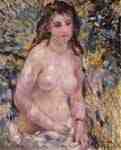
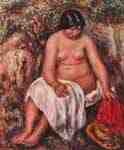
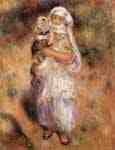
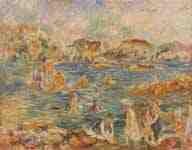
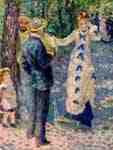
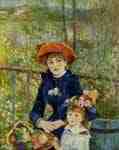
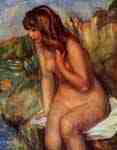
Bathing woman , sitting on a rock




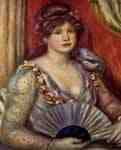
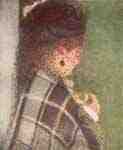
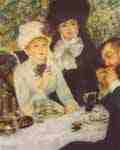
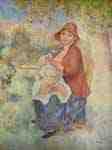
The child at the chest ( maternity)

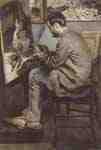
The painter Bazille in the studio


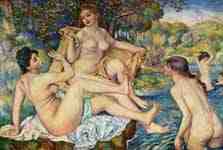
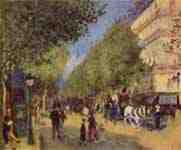

The Loge ( The Orchestra loge )
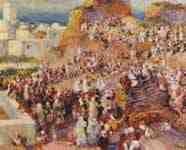

Three girls taking a bath with crab
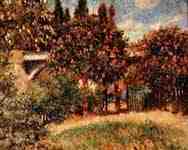

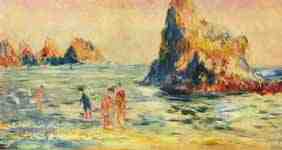
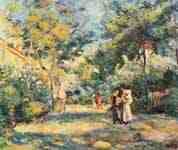
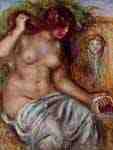
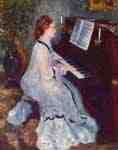
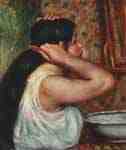
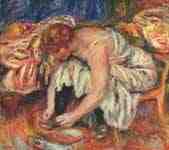
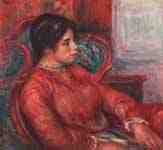
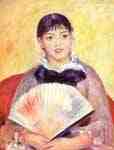


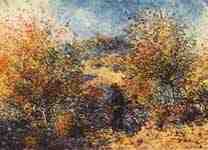
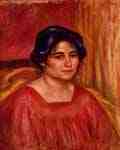
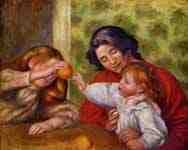

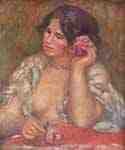
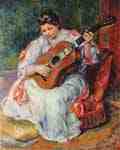
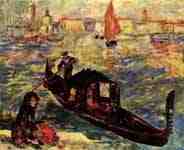
Gondola on the Grand Canal, Venice
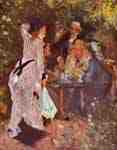
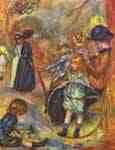
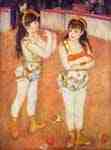

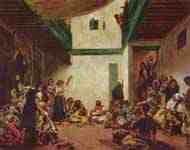
Jewish wedding (after Delacroix)
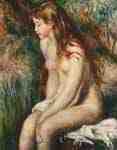
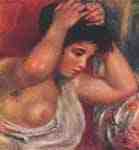


Young man in the forest of Fontainebleau
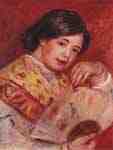
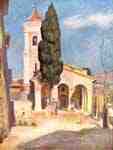
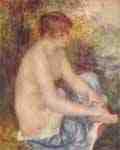

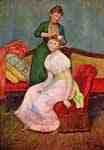
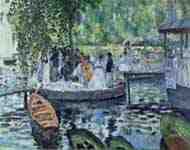
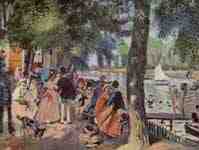
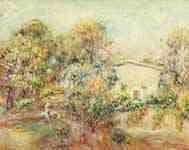
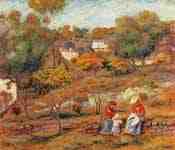
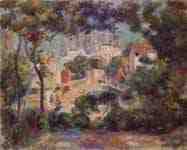
Landscape with view of Sacre Coeur
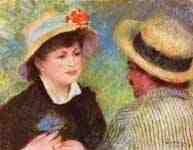
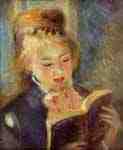
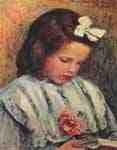
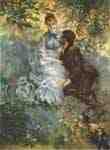
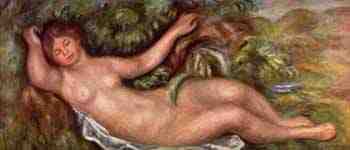

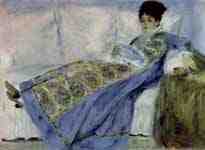
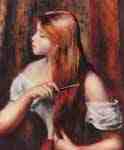
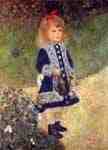
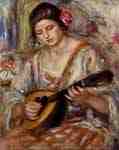
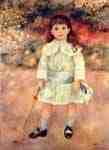
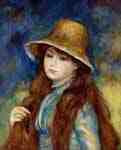
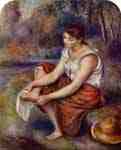

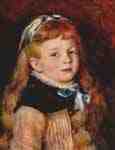
Mademoiselle Grimprel with blue hair band
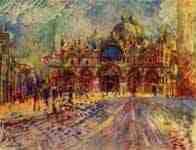

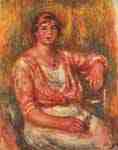

Monet while painting in his garden at Argenteuil
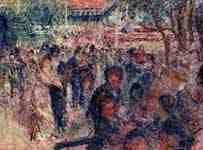
Moulin de la Galette, design sketch

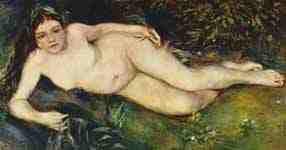
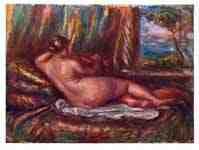
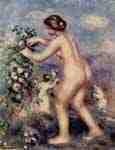
Ode to Flowers ( after Anacreon )
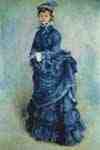
Parisian Girl ( The Lady in Blue)
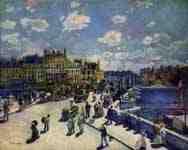
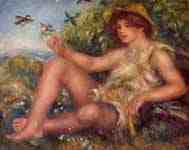
Portrait Alexandre Thurneyssen as a shepherd boy

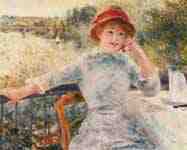
Portrait of Alphonsine Fournaise
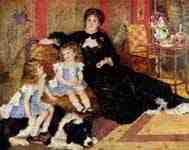
Portrait of Mme Charpentier and her children
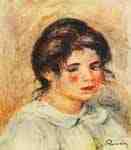
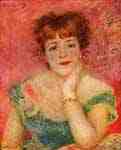
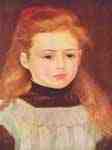
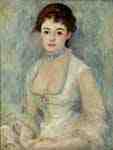
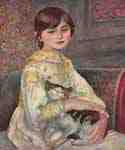
Portrait of Mademoiselle Julie Manet with Cat
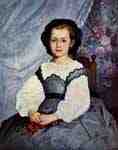
Portrait of Mademoiselle Romaine Lancaux


Portrait of Mme Iscovesco (Portrait Of A Romanian )
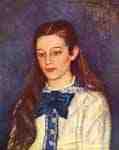
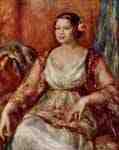
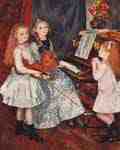
Portrait Of The Daughters of Catulle Mendès at the piano
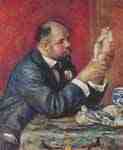
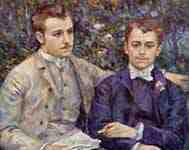
Portrait of Charles and Georges Durand- Ruel
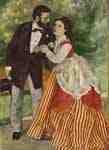
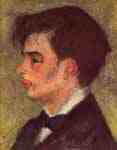
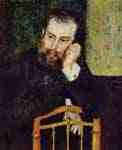
Portrait of the painter Alfred Sisley
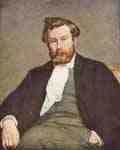
Portrait of the painter Alfred Sisley
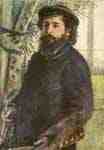
Portrait of the painter Claude Monet
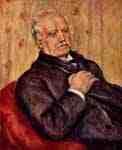
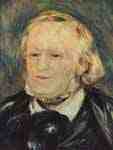
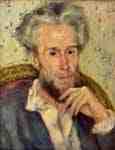
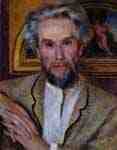
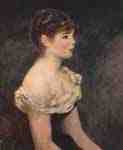
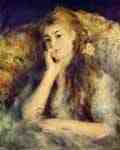
Portrait of a girl ( in thought )
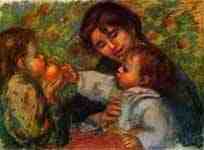
Jean Renoir and Gabrielle with her child
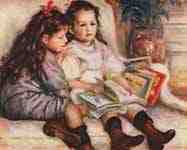
Portrait of Jean and Genevieve Caillebotte


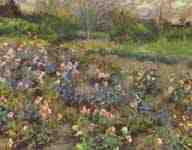
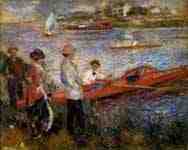
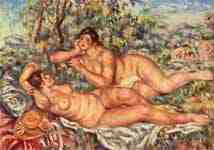
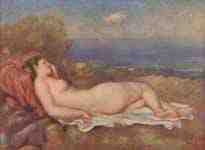

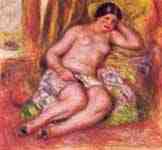
Sleeping Odalisque ( Odalisque with slippers)
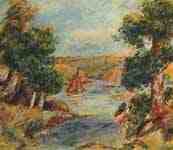


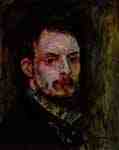
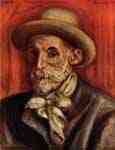
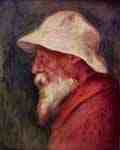

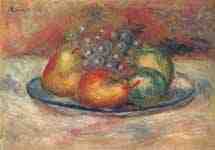
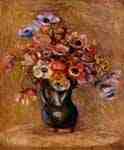
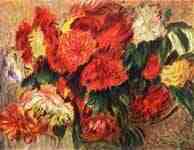
Still life with chrysanthemums
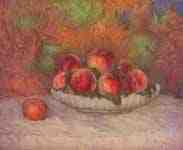
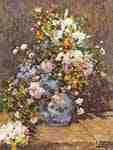
Still life with large vase of flowers
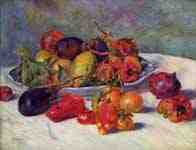
Still life with tropical fruits
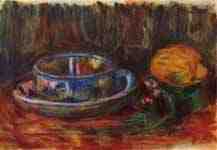

Still life , roses of Vargemont
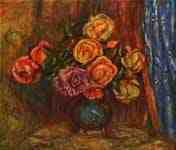
Still life , roses in front of a blue curtain
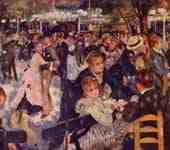
Dance in the " Moulin de la Galette " , detail



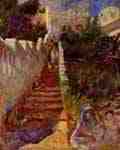
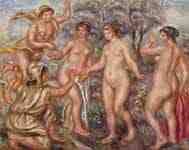
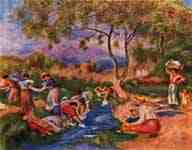


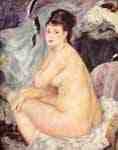
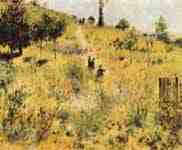
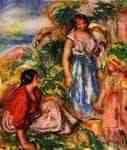
Two women with young girl in a landscape

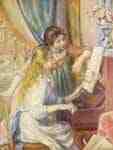

Drawings, Illustrations
Trees
Young Woman holding a Flower. Portrait of Jeanne Samary
Portrait of a Young Girl. Elisabeth Maitre
Enfant Nu Debout
The Dance in the Country
Etude pour la bergre. La vache. La brebis
Le repos
Le Joueur de Fluteau
Caroline Remy, Severine

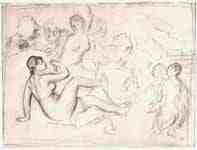
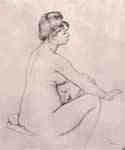
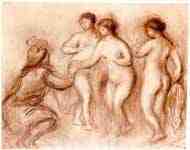
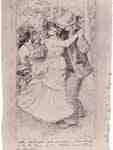
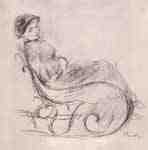

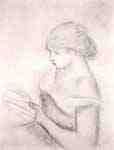
Reading girl and sketch of a seated woman
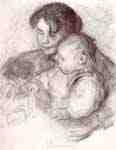
Girl with Child (Jean Renoir and Gabrielle )
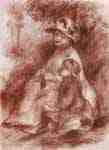
Mother sitting with baby in the grass
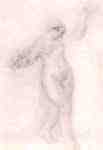
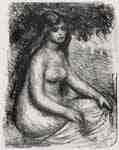
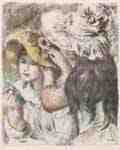
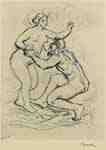

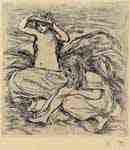

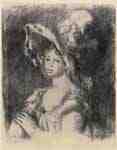


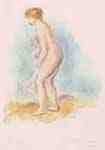
Pierre-Auguste Renoir, commonly known as Auguste Renoir (US /rɛnˈwɑr/ or UK /ˈrɛnwɑr/; French: [pjɛʁ oɡyst ʁənwaʁ]; 25 February 1841 – 3 December 1919), was a French artist who was a leading painter in the development of the Impressionist style. As a celebrator of beauty, and especially feminine sensuality, it has been said that "Renoir is the final representative of a tradition which runs directly from Rubens to Watteau."[1]
He was the father of actor Pierre Renoir (1885–1952), filmmaker Jean Renoir (1894–1979) and ceramic artist Claude Renoir (1901–69). He was the grandfather of the filmmaker Claude Renoir (1913–1993), son of Pierre.

Youth
Pierre-Auguste Renoir was born in Limoges, Haute-Vienne, France, the child of a working-class family. As a boy, he worked in a porcelain factory where his drawing talents led to his being chosen to paint designs on fine china.[2] Before he enrolled in art school, he also painted hangings for overseas missionaries and decorations on fans .[3] During those early years, he often visited the Louvre to study the French master painters.
In 1862, he began studying art under Charles Gleyre in Paris. There he met Alfred Sisley, Frédéric Bazille, and Claude Monet.[4] At times, during the 1860s, he did not have enough money to buy paint. Although Renoir first started exhibiting paintings at the Paris Salon in 1864,[5] recognition was slow in coming, partly as a result of the turmoil of the Franco-Prussian War. Renoir had his first success at the Salon of 1868 with his painting Lise with a Parasol (1867), which depicted Lise Tréhot, his lover at the time.[6]
During the Paris Commune in 1871, while Renoir painted on the banks of the Seine River, some Communards thought he was a spy and were about to throw him into the river when a leader of the Commune, Raoul Rigault, recognized Renoir as the man who had protected him on an earlier occasion.[7]
In 1874, a ten-year friendship with Jules Le Cœur and his family ended,[8] and Renoir lost not only the valuable support gained by the association, but also a generous welcome to stay on their property near Fontainebleau and its scenic forest. This loss of a favorite painting location resulted in a distinct change of subjects.'
Adulthood
The Swing (La Balançoire), 1876, oil on canvas, Musée d'Orsay, Paris
Dance at Le Moulin de la Galette (Bal du moulin de la Galette), 1876
After a series of rejections by the Salon juries, Renoir joined forces with Monet, Sisley, Pissarro, and several other artists to mount the first Impressionist exhibition in April 1874, in which Renoir displayed six paintings. Although the critical response to the exhibition was largely unfavorable, Renoir's work was comparatively well received.[6] That same year, two of his works were shown with Durand-Ruel in London.[8]
Renoir did not exhibit in the fourth and fifth Impressionist exhibitions, and instead resumed submitting his works to the Salon. By the end of the 1870s, particularly after the success of his painting Mme Charpentier and her Children (1878) at the Salon of 1879, Renoir was a successful and fashionable painter.[6]
In 1881, he traveled to Algeria, a country he associated with Eugène Delacroix,[9] then to Madrid, to see the work of Diego Velázquez. Following that, he traveled to Italy to see Titian's masterpieces in Florence and the paintings of Raphael in Rome. On 15 January 1882 Renoir met the composer Richard Wagner at his home in Palermo, Sicily. Renoir painted Wagner's portrait in just thirty-five minutes. In the same year, after contracting pneumonia which permanently damaged his respiratory system, Renoir convalesced for six weeks in Algeria.[10]
In 1883, Renoir spent the summer in Guernsey, one of the Channel Islands in the English Channel with a varied landscape of beaches, cliffs and bays, where he created fifteen paintings in little over a month. Most of these feature Moulin Huet, a bay in Saint Martin's, Guernsey. These paintings were the subject of a set of commemorative postage stamps issued by the Bailiwick of Guernsey in 1983.
While living and working in Montmartre, Renoir employed Suzanne Valadon as a model, who posed for him (The Large Bathers, 1884–87; Dance at Bougival, 1883)[11] and many of his fellow painters; during that time she studied their techniques and eventually became one of the leading painters of the day.
In 1887, the year when Queen Victoria celebrated her Golden Jubilee, and upon the request of the queen's associate, Phillip Richbourg, Renoir donated several paintings to the "French Impressionist Paintings" catalog as a token of his loyalty.
In 1890, he married Aline Victorine Charigot, who, along with a number of the artist's friends, had already served as a model for Le Déjeuner des canotiers (Luncheon of the Boating Party, 1881), and with whom he had already had a child, Pierre, in 1885.[10] After his marriage, Renoir painted many scenes of his wife and daily family life including their children and their nurse, Aline's cousin Gabrielle Renard. The Renoirs had three sons: Jean Renoir, who became a filmmaker of note, Pierre Renoir, who became a stage and film actor, and Claude Renoir, who became a ceramic artist.
Later years
Pierre-Auguste Renoir, c. 1910
Around 1892, Renoir developed rheumatoid arthritis. In 1907, he moved to the warmer climate of "Les Collettes," a farm at Cagnes-sur-Mer, close to the Mediterranean coast.[12] Renoir painted during the last twenty years of his life even when he was wheelchair-bound and arthritis severely limited his movement. He developed progressive deformities in his hands and ankylosis of his right shoulder, requiring him to change his painting technique. It has often been reported that in the advanced stages of his arthritis, he painted by having a brush strapped to his paralyzed fingers,[13] but this is erroneous; Renoir remained able to grasp a brush, although he required an assistant to place it in his hand.[14] The wrapping of his hands with bandages, apparent in late photographs of the artist, served to prevent skin irritation.[14]
In 1919, Renoir visited the Louvre to see his paintings hanging with those of the old masters. During this period, he created sculptures by cooperating with a young artist, Richard Guino, who worked the clay. Due to his limited joint mobility, Renoir also used a moving canvas, or picture roll, to facilitate painting large works.[14]
Renoir's portrait of Austrian actress Tilla Durieux (1914) contains playful flecks of vibrant color on her shawl that offset the classical pose of the actress and highlight Renoir's skill just five years before his death.
Renoir died in the village of Cagnes-sur-Mer, Provence-Alpes-Côte d'Azur, on 3 December 1919.
Artworks
Two Sisters, oil on canvas, 1881, Art Institute of Chicago
Girls at the Piano, 1892, Musée d'Orsay, Paris
Renoir's paintings are notable for their vibrant light and saturated color, most often focusing on people in intimate and candid compositions. The female nude was one of his primary subjects. In characteristic Impressionist style, Renoir suggested the details of a scene through freely brushed touches of color, so that his figures softly fuse with one another and their surroundings.
His initial paintings show the influence of the colorism of Eugène Delacroix and the luminosity of Camille Corot. He also admired the realism of Gustave Courbet and Édouard Manet, and his early work resembles theirs in his use of black as a color. Renoir admired Edgar Degas' sense of movement. Another painter Renoir greatly admired was the 18th-century master François Boucher.[15]
A fine example of Renoir's early work and evidence of the influence of Courbet's realism, is Diana, 1867. Ostensibly a mythological subject, the painting is a naturalistic studio work; the figure carefully observed, solidly modeled and superimposed upon a contrived landscape. If the work is a "student" piece, Renoir's heightened personal response to female sensuality is present. The model was Lise Tréhot, the artist's mistress at that time, and inspiration for a number of paintings.[16]
In the late 1860s, through the practice of painting light and water en plein air (outdoors), he and his friend Claude Monet discovered that the color of shadows is not brown or black, but the reflected color of the objects surrounding them, an effect known today as diffuse reflection. Several pairs of paintings exist in which Renoir and Monet worked side-by-side, depicting the same scenes (La Grenouillère, 1869).
One of the best known Impressionist works is Renoir's 1876 Dance at Le Moulin de la Galette (Bal du moulin de la Galette). The painting depicts an open-air scene, crowded with people at a popular dance garden on the Butte Montmartre close to where he lived. The works of his early maturity were typically Impressionist snapshots of real life, full of sparkling color and light. By the mid-1880s, however, he had broken with the movement to apply a more disciplined formal technique to portraits and figure paintings, particularly of women. It was a trip to Italy in 1881, when he saw works by Raphael and other Renaissance masters, that convinced him that he was on the wrong path, and for the next several years he painted in a more severe style in an attempt to return to classicism.[17] Concentrating on his drawing and emphasizing the outlines of figures, he painted works such as The Large Bathers (1884–87; Philadelphia Museum of Art) during what is sometimes called his "Ingres period".[18]
After 1890 he changed direction again. To dissolve outlines, as in his earlier work, he returned to thinly brushed color. From this period onward he concentrated on monumental nudes and domestic scenes, fine examples of which are Girls at the Piano, 1892, and Grandes Baigneuses, 1887. The latter painting is the most typical and successful of Renoir's late, abundantly fleshed nudes.[19]
A prolific artist, he created several thousand paintings. The warm sensuality of Renoir's style made his paintings some of the most well-known and frequently reproduced works in the history of art. The single largest collection of his works—181 paintings in all—is at the Barnes Foundation, in Philadelphia.
Posthumous prints
In 1919, Ambroise Vollard, a renowned art dealer, published a book on the life and work of Renoir, La Vie et l'Œuvre de Pierre-Auguste Renoir, in an edition of 1000 copies. In 1986, Vollard's heirs started reprinting the copper plates, generally etchings with hand applied watercolor. These prints are signed by Renoir in the plate and are embossed "Vollard" in the lower margin. They are not numbered, dated or signed in pencil.
Posthumous sales
Two of Renoir's paintings have sold for more than US$70 million. Bal au moulin de la Galette sold for $78.1 million in 1990.
In 2012, Renoir's Paysage bord du Seine was offered for sale at auction but the painting was discovered to have been stolen from the Baltimore Museum of Art in 1951. The sale was cancelled.
References
Read, Herbert: The Meaning of Art, page 127. Faber, 1931.
Renoir, Jean: Renoir, My Father, pages 57–67. Collins, 1962.
Vollard, Ambroise: Renoir, An Intimate Record, pages 24–29. Knopf, 1925.
Vollard, page 30.
Wadley, Nicholas: Renoir, A Retrospective, page 15. Park Lane, 1989.
Distel, Anne. "Renoir, Auguste." Grove Art Online. Oxford Art Online. Oxford University Press. Web. 27 Dec. 2014.
Renoir, Jean, pages 118–21. Different and less life-threatening versions are offered by Paul Valéry and Vollard. In all accounts, however, their re-acquaintance led to great celebration.
Wadley, page 15.
Poulet, A. L., & Murphy, A. R. (1979). Corot to Braque: French Paintings from the Museum of Fine Arts, Boston, page 117. Boston: The Museum. ISBN 0-87846-134-5.
Wadley, page 25.
Wadley, pages 371, 374.
Wadley, page 28.
André, Albert: Renoir. Crés, 1928.
"Boonen, A.; van de Rest, J.; Dequeker, J.; van der Linden, S.: "How Renoir Coped with Rheumatoid Arthritis". ''British Medical Journal'', 1997:315:1704–1708". Bmj.com. Retrieved 7 April 2012.
Rey, Robert: La Peinture française à la fin du XIXe siècle, la renaissance du sentiment classique : Degas, Renoir, Cézanne, Gauguin, Seurat, Les Beaux-Arts, Van Oest, 1931 (thesis).
"From the Tour: Mary Cassatt", August Renoir. Retrieved 7 March 2007.
Clark, Kenneth: The Nude, pages 154–61. Penguin, 1960.
Asked late in life if he felt an affinity to Ingres, he responded: "I should very much like to". Rey, quoted in Wadley, page 336.
"For me, Renoir becomes a really great artist in the late nudes, above all in Les Grandes Baigneuses". David Sylvester, quoted by Wadley, page 378
Further reading
External video Renoir, "La Promenade" on YouTube, (1:49) Frick Collection
'Renoir, Impressionism, and Full-Length Painting,' An Introduction to the Exhibition on YouTube, (6:14) Frick Collection
Claude Roger-Marx (1952). Les Lithographies de Renoir. Monte-Carlo: Andre Sauret.
Joseph G. Stella (1975). The Graphic Work of Renoir: Catalogue Raisonne. London: Lund Humphries.
Jean Leymarie et Michel Melot (1971). Les Gravures Des Impressionistes, Manet, Pissarro, Renoir, Cezanne, Sisley. Paris: Arts et Metiers Graphiques.
Michel Melot (1996). The Impressionist Print. New Haven: Yale University Press.
Theodore Duret (1924). Renoir. Paris: Bernheim-Jeune.
Paul Haeserts (1947). Renoir Sculpteur. Bruxelles: Hermès.
----
Fine Art Prints | Greeting Cards | Phone Cases | Lifestyle | Face Masks | Men's , Women' Apparel | Home Decor | jigsaw puzzles | Notebooks | Tapestries | ...
----
Artist
A - B - C - D - E - F - G - H - I - J - K - L - M -
N - O - P - Q - R - S - T - U - V - W - X - Y - Z
Retrieved from "http://en.wikipedia.org/"
All text is available under the terms of the GNU Free Documentation License


